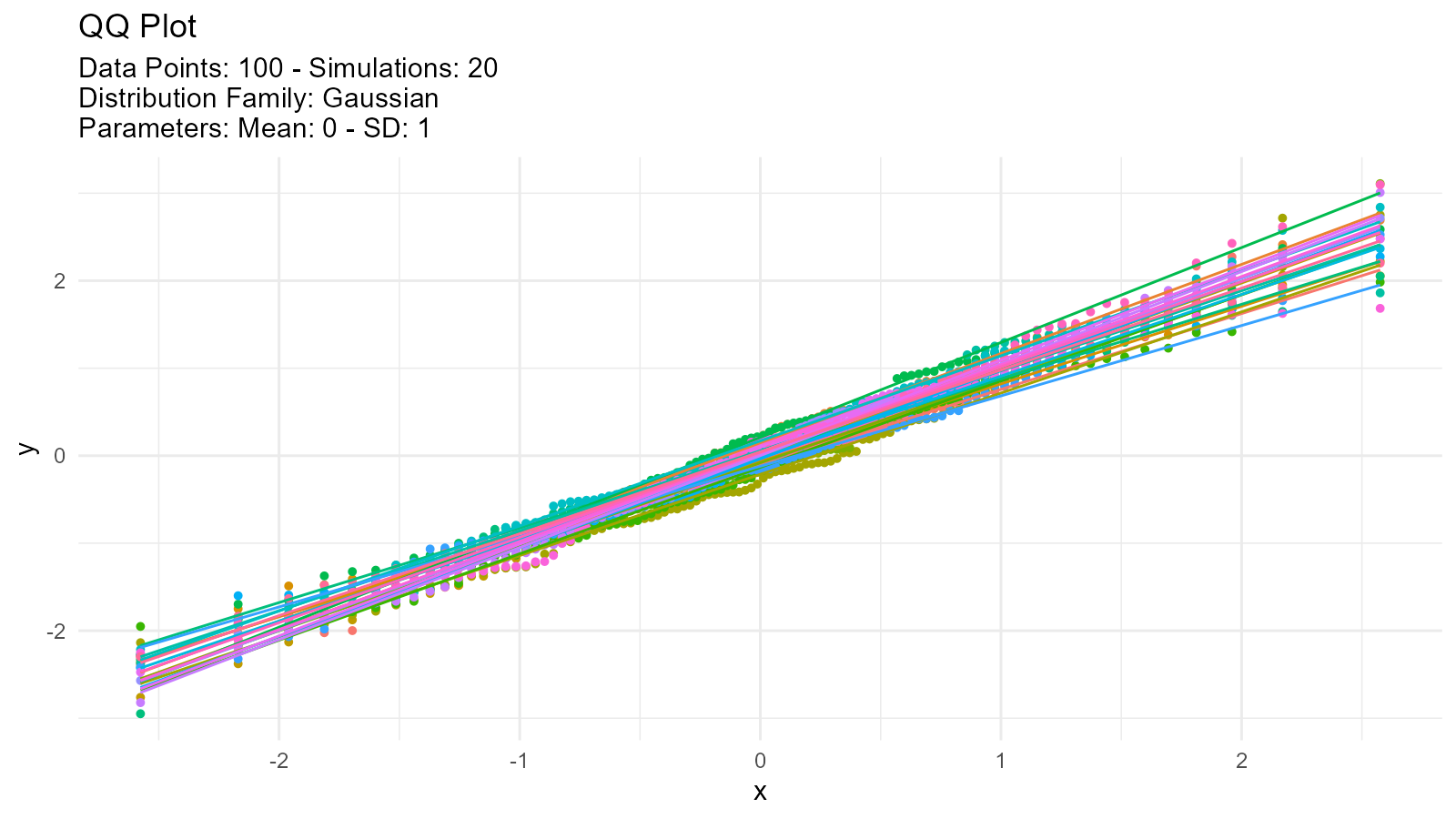Example
This is a basic example which shows you how easy it is to generate data with TidyDensity:
library(TidyDensity)
library(dplyr)
library(ggplot2)
tidy_normal()
#> # A tibble: 50 × 7
#> sim_number x y dx dy p q
#> <fct> <int> <dbl> <dbl> <dbl> <dbl> <dbl>
#> 1 1 1 -1.40 -3.47 0.000261 0.0808 -1.40
#> 2 1 2 0.255 -3.32 0.000873 0.601 0.255
#> 3 1 3 -2.44 -3.17 0.00245 0.00740 -2.44
#> 4 1 4 -0.00557 -3.02 0.00579 0.498 -0.00557
#> 5 1 5 0.622 -2.88 0.0117 0.733 0.622
#> 6 1 6 1.15 -2.73 0.0209 0.875 1.15
#> 7 1 7 -1.82 -2.58 0.0337 0.0342 -1.82
#> 8 1 8 -0.247 -2.43 0.0512 0.402 -0.247
#> 9 1 9 -0.244 -2.28 0.0741 0.404 -0.244
#> 10 1 10 -0.283 -2.14 0.102 0.389 -0.283
#> # ℹ 40 more rowsAn example plot of the tidy_normal data.
tn <- tidy_normal(.n = 100, .num_sims = 6)
tidy_autoplot(tn, .plot_type = "density")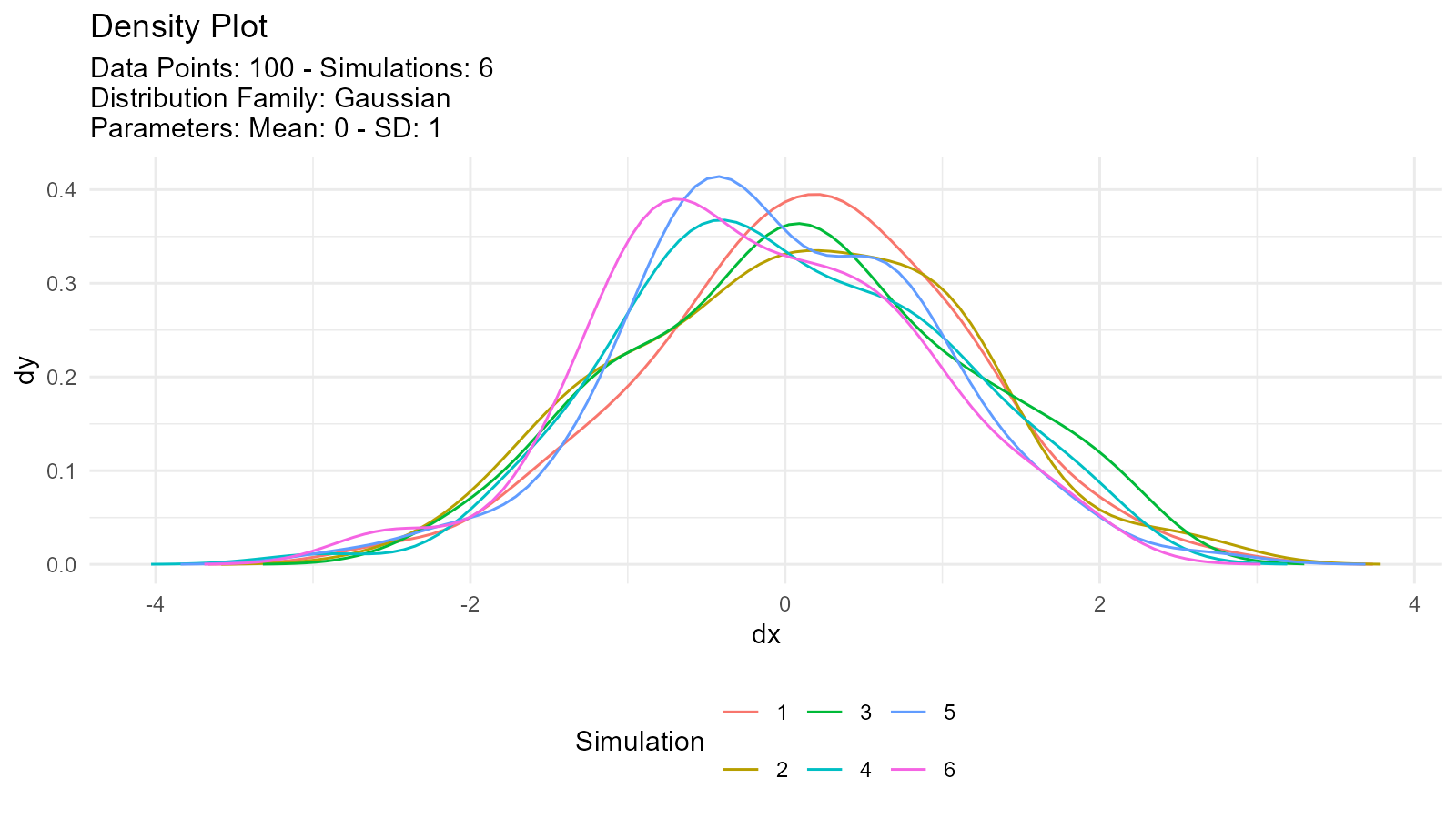
tidy_autoplot(tn, .plot_type = "quantile")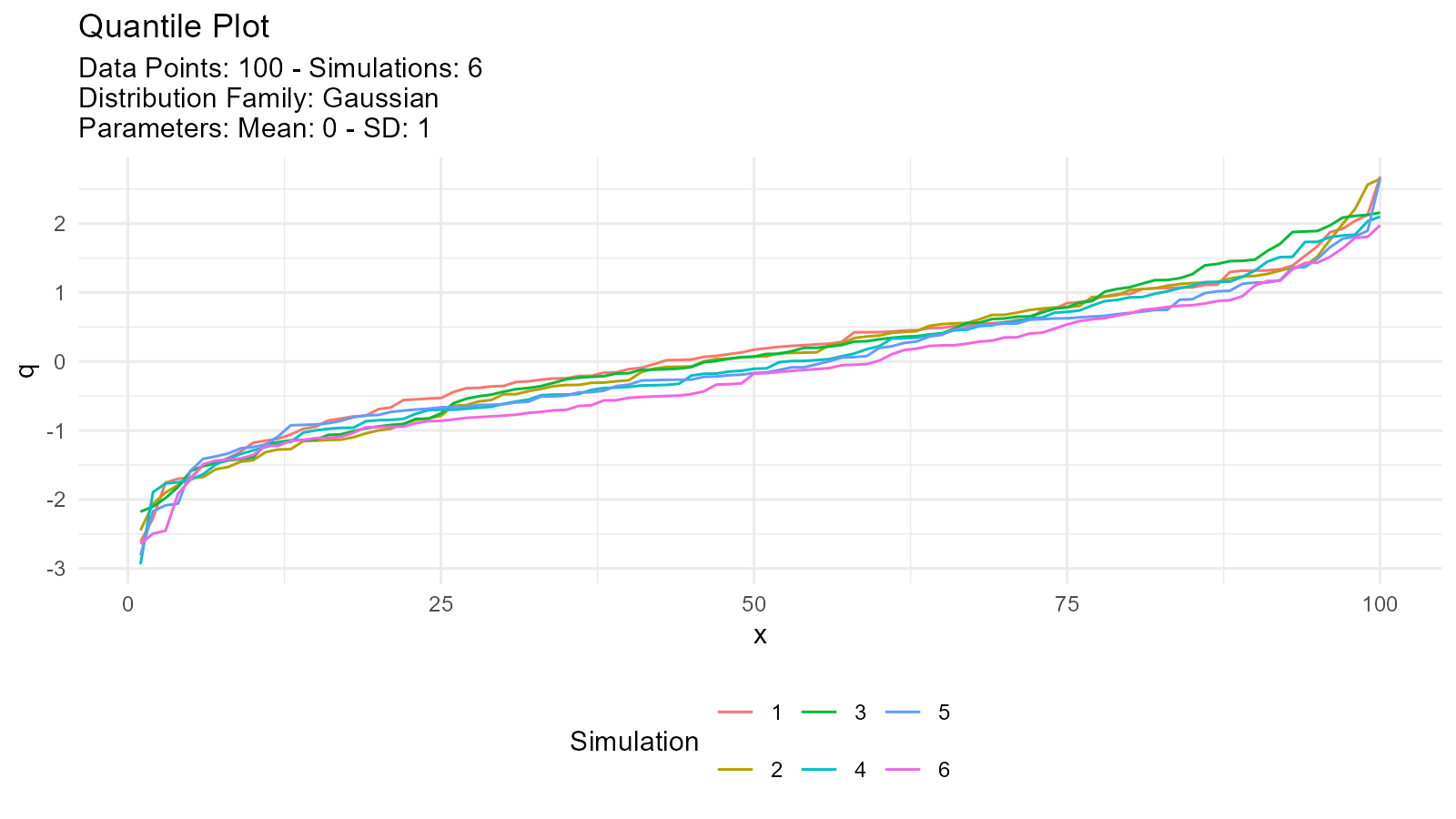
tidy_autoplot(tn, .plot_type = "probability")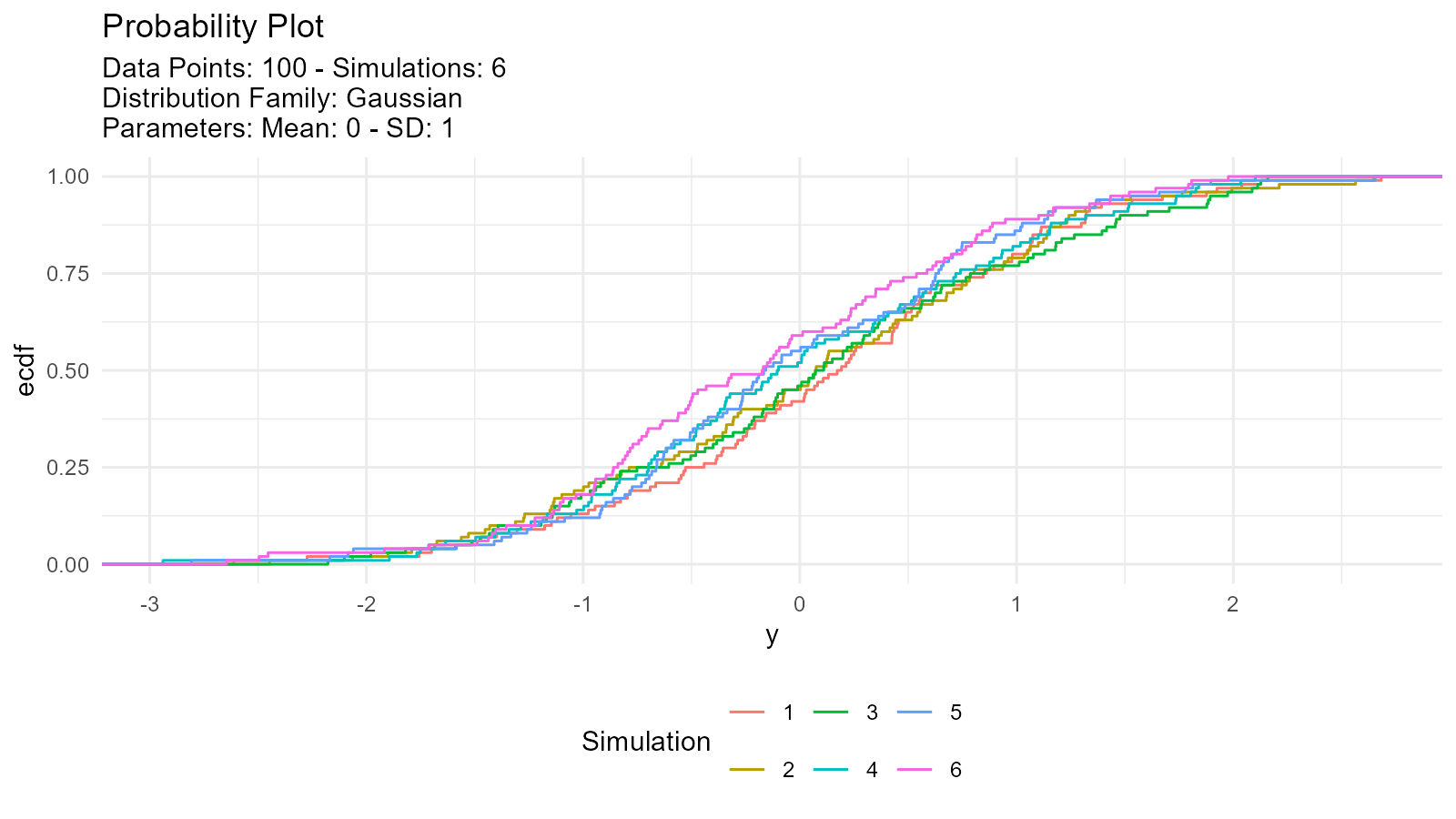
tidy_autoplot(tn, .plot_type = "qq")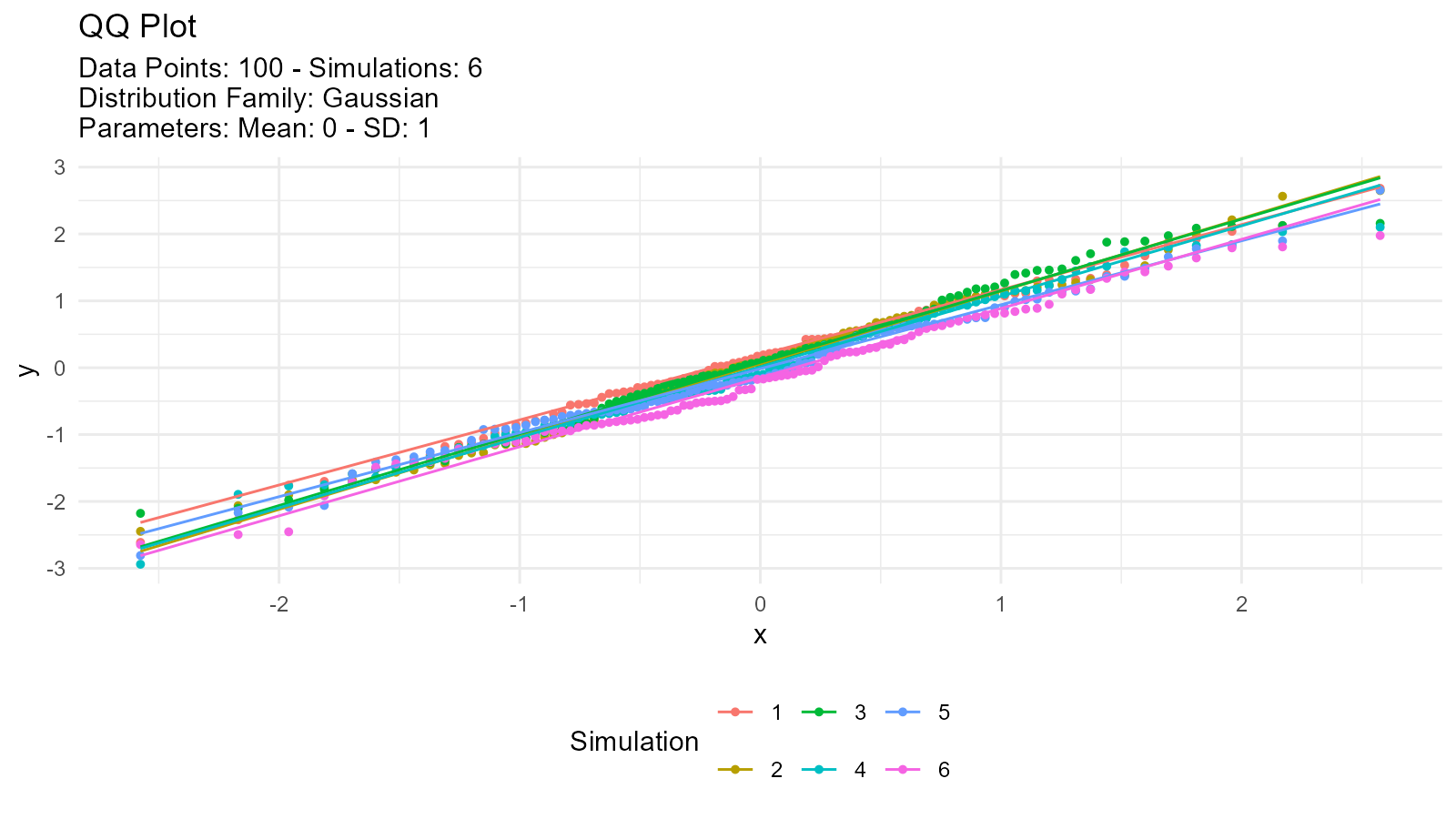
We can also take a look at the plots when the number of simulations is greater than nine. This will automatically turn off the legend as it will become too noisy.
tn <- tidy_normal(.n = 100, .num_sims = 20)
tidy_autoplot(tn, .plot_type = "density")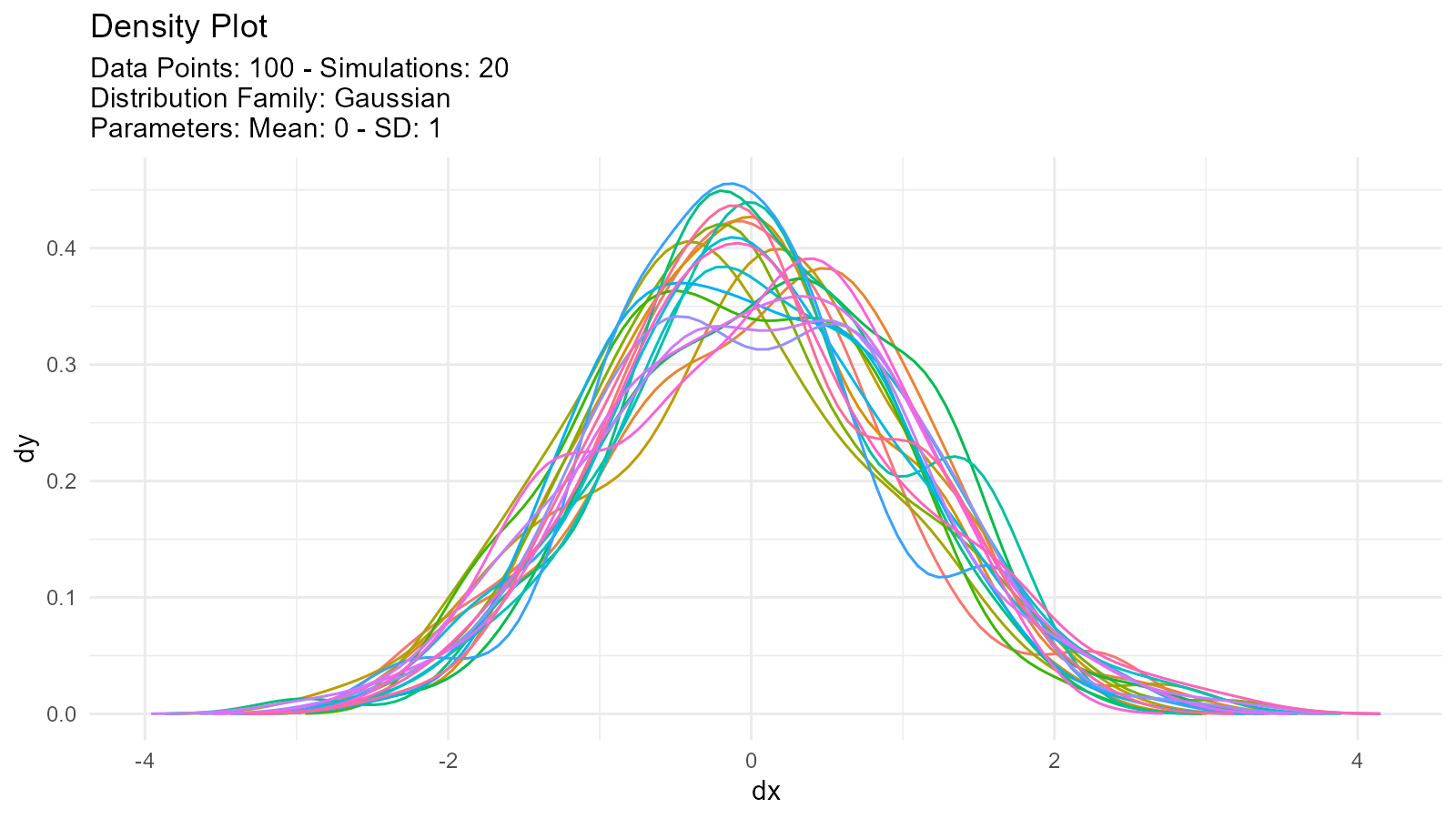
tidy_autoplot(tn, .plot_type = "quantile")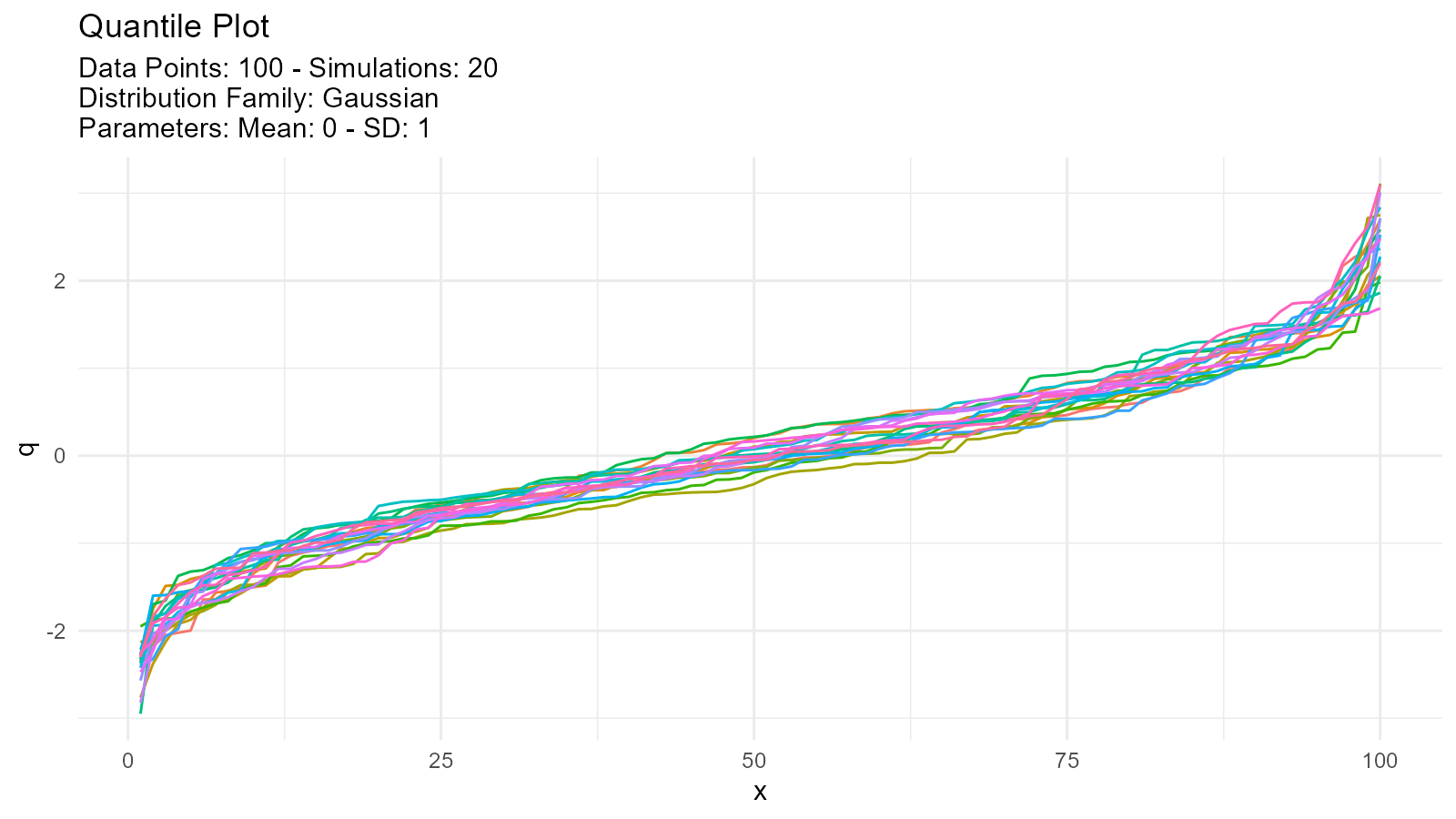
tidy_autoplot(tn, .plot_type = "probability")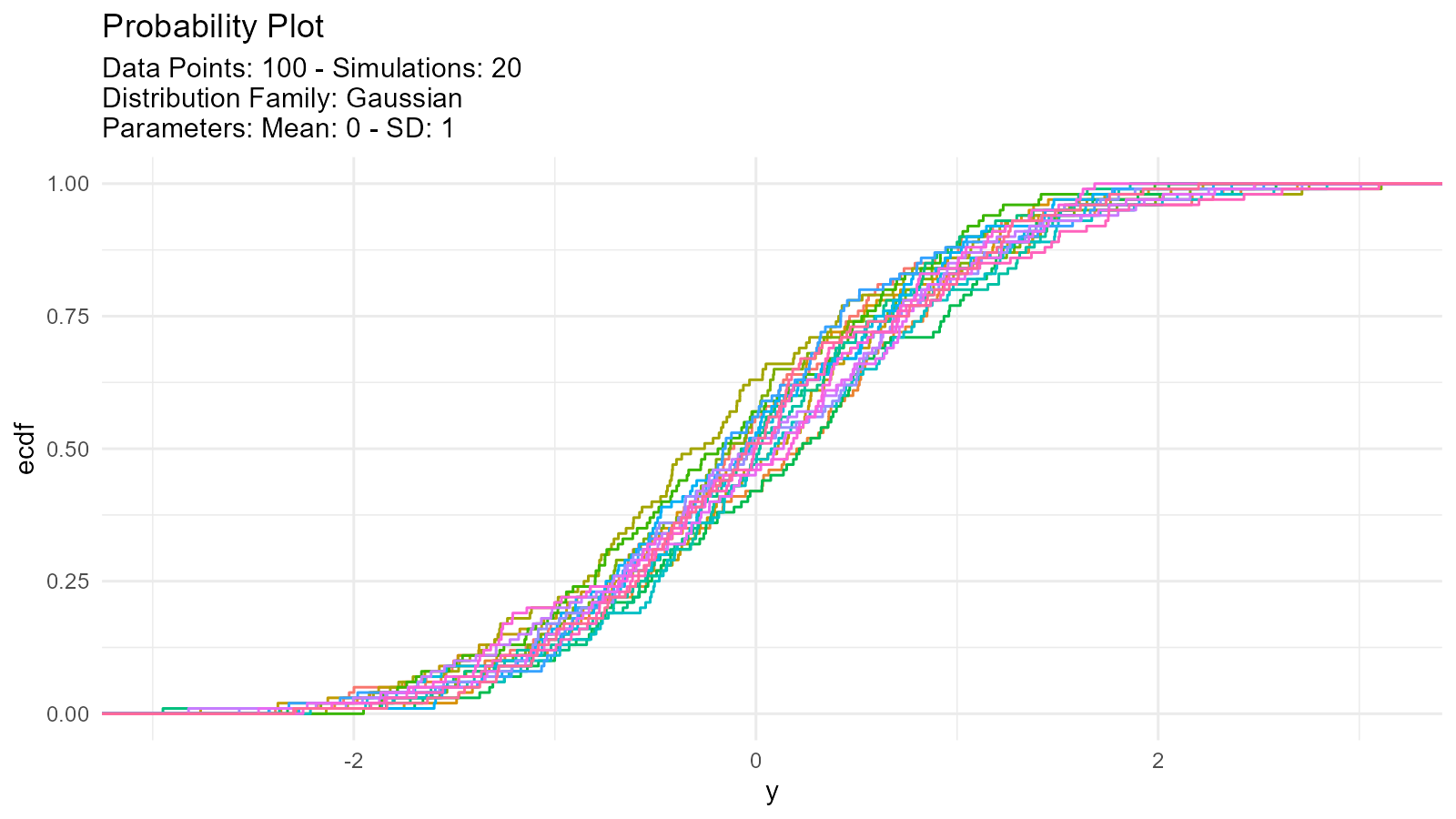
tidy_autoplot(tn, .plot_type = "qq")